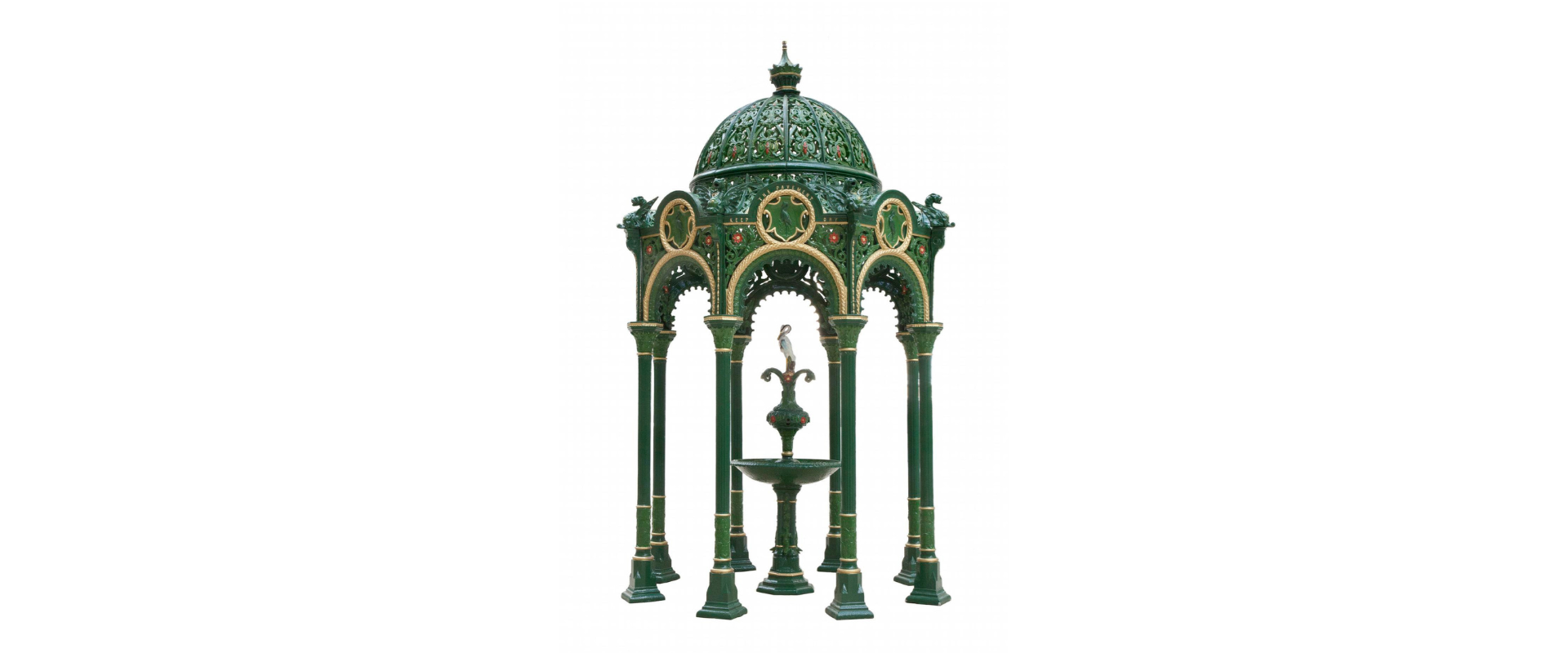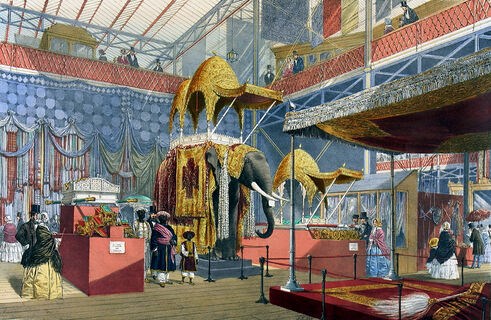Key in a search term below to search our website.
Key in a search term below to search our website.

कहानियाँ Kahaniyan of South Asia
The drinking fountain can be found on Level 1 in the Grand Gallery at the National Museum of Scotland.
This cast iron drinking fountain and pavilion was created by Walter MacFarlane’s Glasgow based Saracen Foundry in the 1880s, considered Scotland's most prolific architectural iron foundry.
The Foundry specialised in complex cast iron designs and decorative pieces that were made to be exported to British colonies.

Staff and members of NKS pose for a group picture in front of the Drinking fountain in the Grand Gallery.
At the 1851 Great Exhibition, the Indian Pavilion had been the most popular, and had raised interest in Indian design, and this had a big influence on British art and culture in the decades that followed. For example, in 1911 King George V was proclaimed Emperor of India in Delhi in a prefabricated cast iron hall made by Walter MacFarlane.

The Indian Pavilion at the Great Exhibition of 1851
© Getty Images
In the late 19th century, British architects and engineers were also making use of iron. Walter Macfarlane II, a nephew of Walter Macfarlane, engaged the best architects to produce cast iron designs for decorative pieces. He prepared a catalogue of designs for potential clients in British colonies, and the Drinking Fountain design at the National Museum of Scotland is listed as item number 21 in this catalogue. British colonies in turn started using cast iron pieces for railways, lamps or fountains, for example. Clients in the colonies were making their own choices with regard to design details.
So, it’s likely that the drinking fountain design was inspired by the culture of one of the British colonies. While clearly a mixture of design motifs such as flowers, griffins and cranes, the influence of South Asia and Indian artistic styles can be seen in its intricately decorated dome and arches.